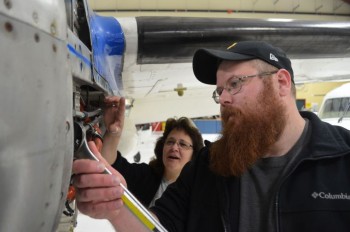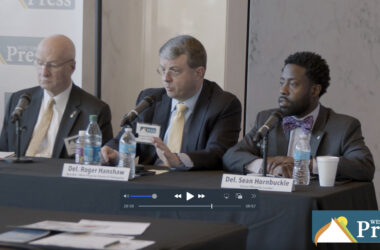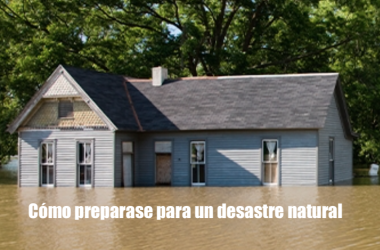
A student works on an airplane engine in the hangar of the Robert C. Byrd National Aerospace Education Center.
BRIDGEPORT, W.Va. — Speaking inside the hangar of the Robert C. Byrd National Aerospace Education Center in Bridgeport, aviation instructor Cindy Rodina said the school does a lot for its students with the resources it has.
“It’s amazing what we do with what we have,” Rodina said. “Every one of our instructors is so passionate and takes pride in what we do.”
But, by all accounts, the Aerospace Education Center — like many state-funded institutions in West Virginia — is working under budget constraints.
“If you look in the budget, higher education has been cut the last few years while we’re trying to grow a workforce and train students for careers in aviation,” said Thomas Stose, the Aerospace Education Center’s director. “The state is in dire straits right now. Coal isn’t bringing in the money it used to bring in, and the governor and the Legislature are trying to do what’s best for the state by trying to balance the budget.”
On Stose’s wish list, so to speak, would be a bigger marketing budget to attract more students, a new instructional aircraft to replace aging equipment and enough funds to hire an additional instructor.
The school has not been able to replace a recently retired instructor due to budget constraints, he said.
“It’s not like the governor’s come down and said, ‘You cannot hire someone.’ It’s just that in cost-conservative measures, we’ve not replaced that instructor,” Stose said.
The current instructional aircraft are getting worn down, “studentized” — Stose’s term — over years of being disassembled and assembled.
“We’re using the same training equipment that we had when I got here 18 years ago,” Stose said. “Having students take it apart and put it back together, after so many times, it starts getting worn, because airplanes weren’t designed to be taken apart and put back together so many times.”
Getting a new plane for students to work on would require “massive” resources, Stose said. Even an aircraft at the end of its life cycle could easily cost $300,000, he said.
But even in a cost-conservative environment, the Aerospace Education Center can boast about an impressive job placement rate…






